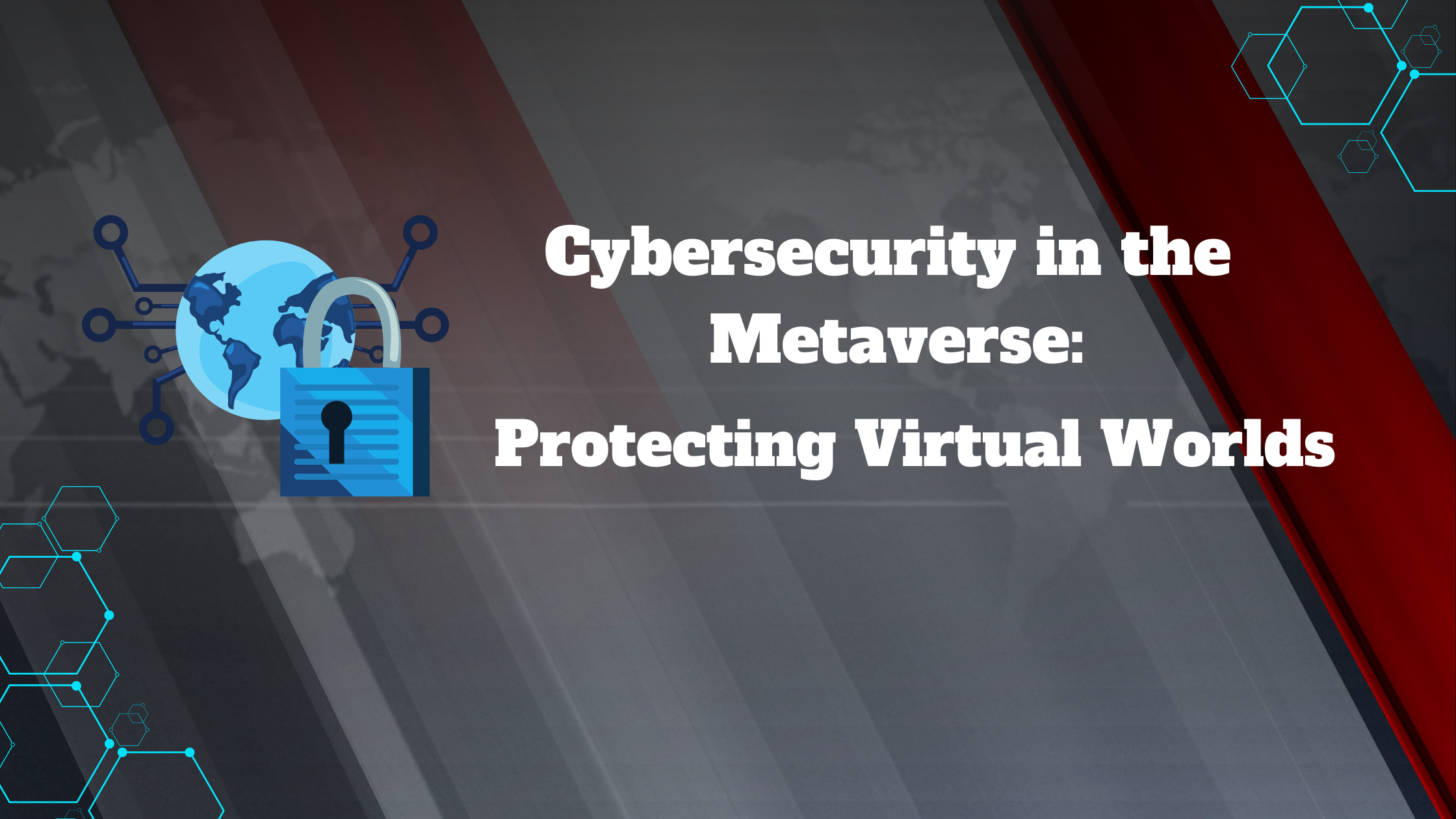Cybersecurity in the Metaverse: Protecting Virtual Worlds
The metaverse is no longer a concept confined to the realms of science fiction; it has become a burgeoning digital reality where individuals interact, socialize, work, and even conduct business. As virtual reality (VR) platforms, augmented reality (AR) technologies, and blockchain innovations converge to create immersive digital spaces, a new frontier for cybersecurity emerges. Protecting these virtual worlds is as critical as safeguarding physical ones, given the significant economic, social, and personal stakes involved. This article explores the challenges, risks, and strategies to secure the metaverse.
The Unique Cybersecurity Challenges of the Metaverse
The metaverse introduces novel complexities that traditional cybersecurity measures struggle to address. Below are some of the unique challenges:
- Identity Theft and Fraud In the metaverse, digital avatars serve as extensions of users. These avatars are tied to sensitive personal data, including payment information and digital assets. Cybercriminals could impersonate avatars, steal identities, or exploit stolen credentials for financial or reputational gain.
- Data Privacy Concerns The metaverse thrives on extensive data collection to deliver personalized experiences. From biometric data used in VR headsets to location tracking and behavioral analytics, the volume of data being processed increases the risk of breaches and misuse.
- Virtual Asset Security Non-fungible tokens (NFTs), cryptocurrencies, and other blockchain-based assets are integral to the metaverse economy. However, these assets are prime targets for hacking, phishing attacks, and wallet thefts.
- Cyberbullying and Harassment The immersive nature of the metaverse amplifies the potential for cyberbullying and harassment. Users could face real emotional distress from virtual interactions, requiring platforms to implement robust mechanisms for reporting and preventing abuse.
- Interoperability Risks The metaverse is designed to be an interconnected ecosystem, enabling seamless movement across platforms. This interoperability also means that vulnerabilities in one platform can propagate to others, creating a ripple effect of security risks.
Key Strategies for Securing the Metaverse
Securing the metaverse demands a multi-faceted approach, blending advanced technologies with robust governance frameworks. Here are some essential strategies:
- Decentralized Identity Management Blockchain technology can enable decentralized identity systems where users retain control over their personal information. Self-sovereign identities (SSIs) ensure that user data is secure, reducing the risk of identity theft.
- Advanced Encryption Protocols Encrypting data at every stage of transmission and storage is vital in the metaverse. End-to-end encryption should be standard for communications, transactions, and file exchanges.
- AI-Driven Threat Detection Artificial intelligence (AI) can enhance threat detection by analyzing vast amounts of data to identify anomalies and potential breaches. Machine learning algorithms can adapt to evolving threats in real-time.
- User Education and Awareness Educating users about cybersecurity risks and best practices is crucial. Awareness campaigns, in-platform tutorials, and regular updates on potential threats can empower users to protect themselves.
- Robust Governance Policies Governments, platform operators, and stakeholders must collaborate to establish clear regulations for the metaverse. These should address data privacy, user rights, and acceptable behavior while enforcing strict penalties for violations.
- Multi-Factor Authentication (MFA) MFA should become a standard security measure for accessing the metaverse. Combining biometrics, hardware tokens, and traditional passwords adds an extra layer of protection against unauthorized access.
The Role of Collaboration in Metaverse Security
No single entity can secure the metaverse alone. Collaboration between developers, cybersecurity firms, governments, and users is essential to build a safer virtual environment. Initiatives such as shared threat intelligence platforms and industry standards can foster a collective defense against cyber threats.
The Future of Cybersecurity in the Metaverse
As the metaverse continues to evolve, so too will the threats it faces. Future advancements in quantum computing, for instance, could render current encryption methods obsolete, necessitating the development of quantum-resistant algorithms. Similarly, as the metaverse becomes more integrated with physical systems through the Internet of Things (IoT), securing these interconnected networks will be paramount.
The metaverse holds immense promise, but its success hinges on the ability to ensure a secure and trustworthy environment for users. By proactively addressing cybersecurity challenges and fostering a culture of vigilance, we can unlock the full potential of these virtual worlds without compromising safety and privacy.
The metaverse is more than just a digital playground; it is a new dimension of human interaction and commerce. Securing it requires innovation, collaboration, and an unwavering commitment to safeguarding its inhabitants. Are we ready to rise to the challenge?


